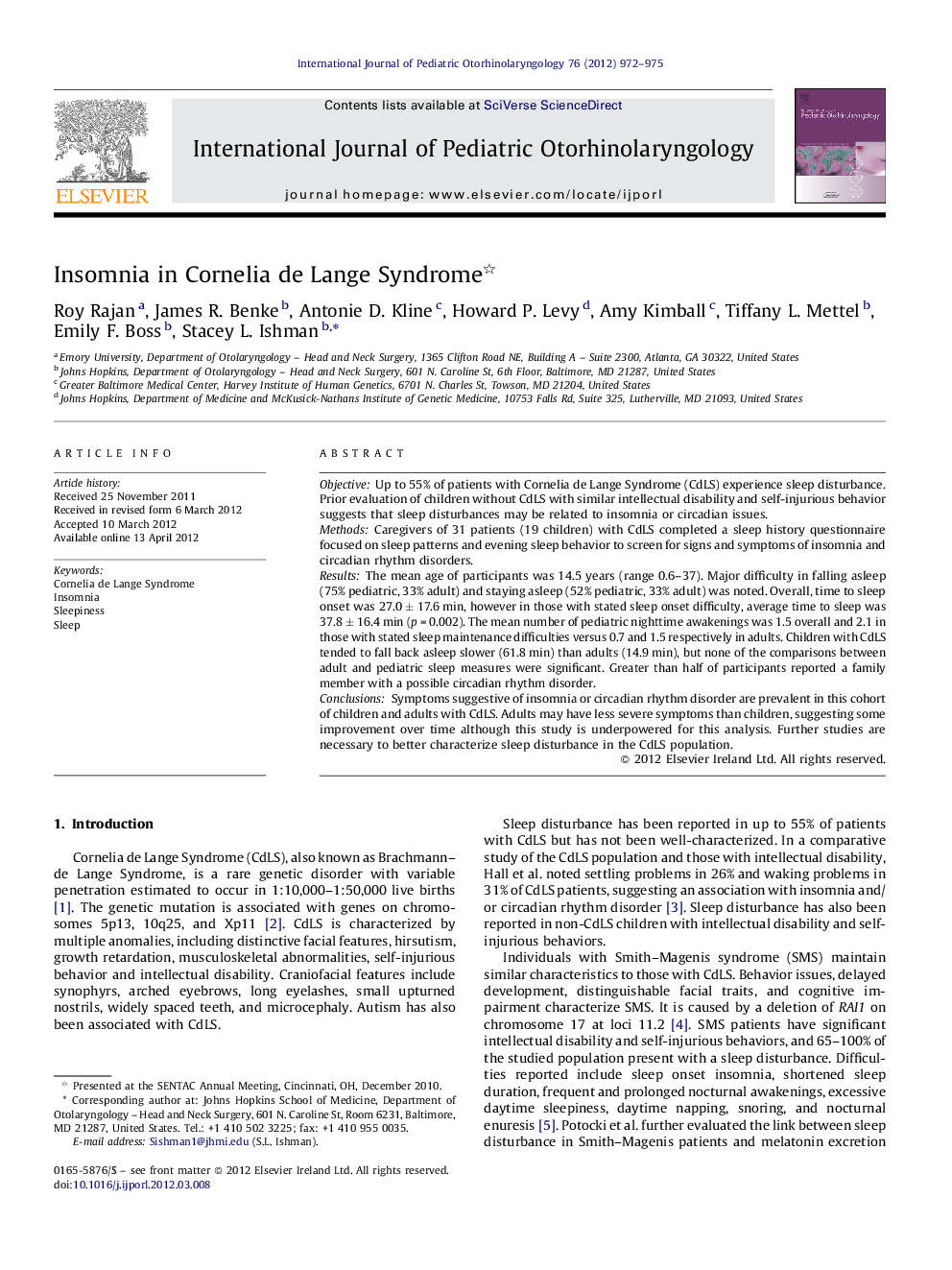| Article ID | Journal | Published Year | Pages | File Type |
|---|---|---|---|---|
| 4113396 | International Journal of Pediatric Otorhinolaryngology | 2012 | 4 Pages |
ObjectiveUp to 55% of patients with Cornelia de Lange Syndrome (CdLS) experience sleep disturbance. Prior evaluation of children without CdLS with similar intellectual disability and self-injurious behavior suggests that sleep disturbances may be related to insomnia or circadian issues.MethodsCaregivers of 31 patients (19 children) with CdLS completed a sleep history questionnaire focused on sleep patterns and evening sleep behavior to screen for signs and symptoms of insomnia and circadian rhythm disorders.ResultsThe mean age of participants was 14.5 years (range 0.6–37). Major difficulty in falling asleep (75% pediatric, 33% adult) and staying asleep (52% pediatric, 33% adult) was noted. Overall, time to sleep onset was 27.0 ± 17.6 min, however in those with stated sleep onset difficulty, average time to sleep was 37.8 ± 16.4 min (p = 0.002). The mean number of pediatric nighttime awakenings was 1.5 overall and 2.1 in those with stated sleep maintenance difficulties versus 0.7 and 1.5 respectively in adults. Children with CdLS tended to fall back asleep slower (61.8 min) than adults (14.9 min), but none of the comparisons between adult and pediatric sleep measures were significant. Greater than half of participants reported a family member with a possible circadian rhythm disorder.ConclusionsSymptoms suggestive of insomnia or circadian rhythm disorder are prevalent in this cohort of children and adults with CdLS. Adults may have less severe symptoms than children, suggesting some improvement over time although this study is underpowered for this analysis. Further studies are necessary to better characterize sleep disturbance in the CdLS population.
